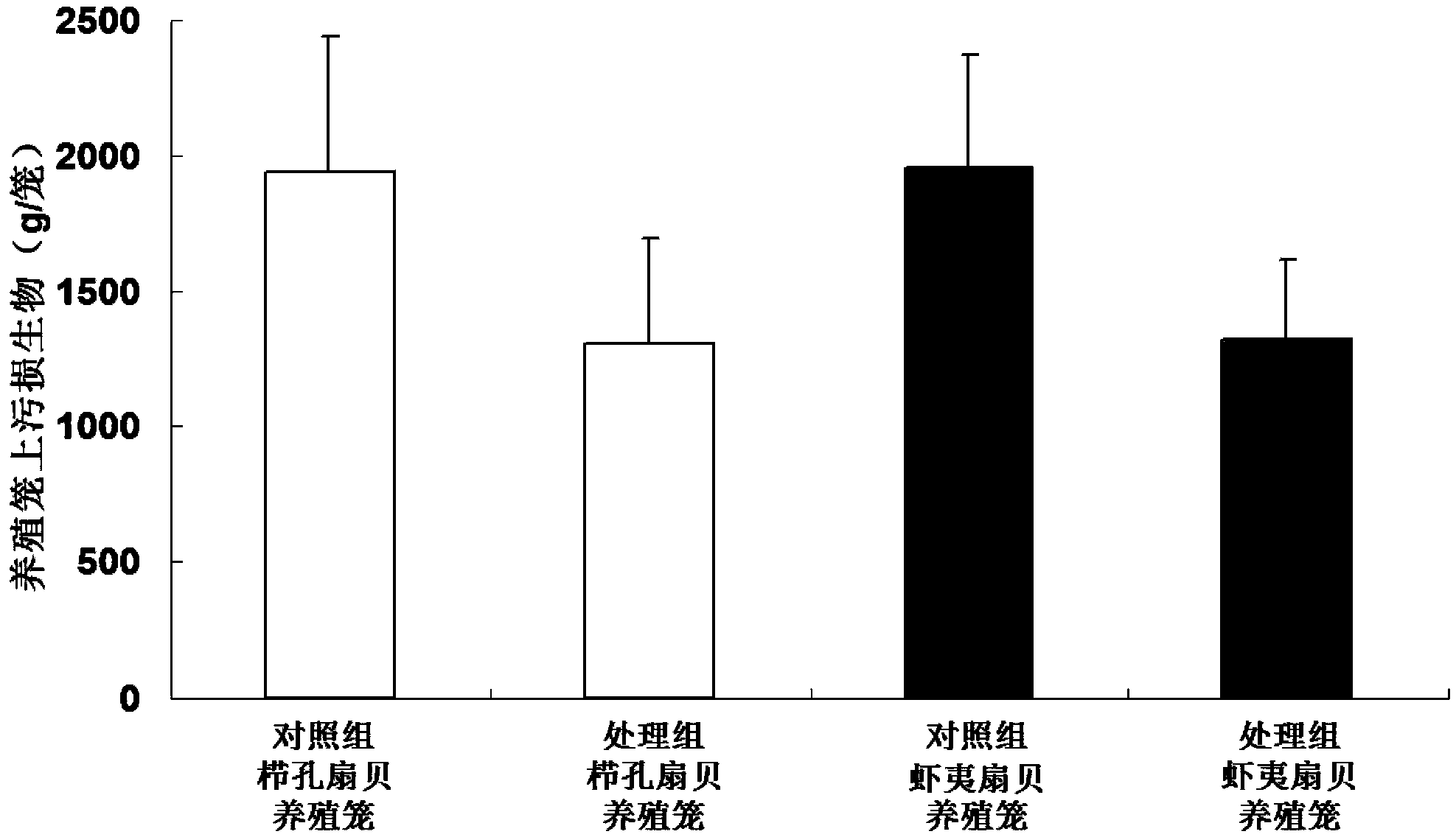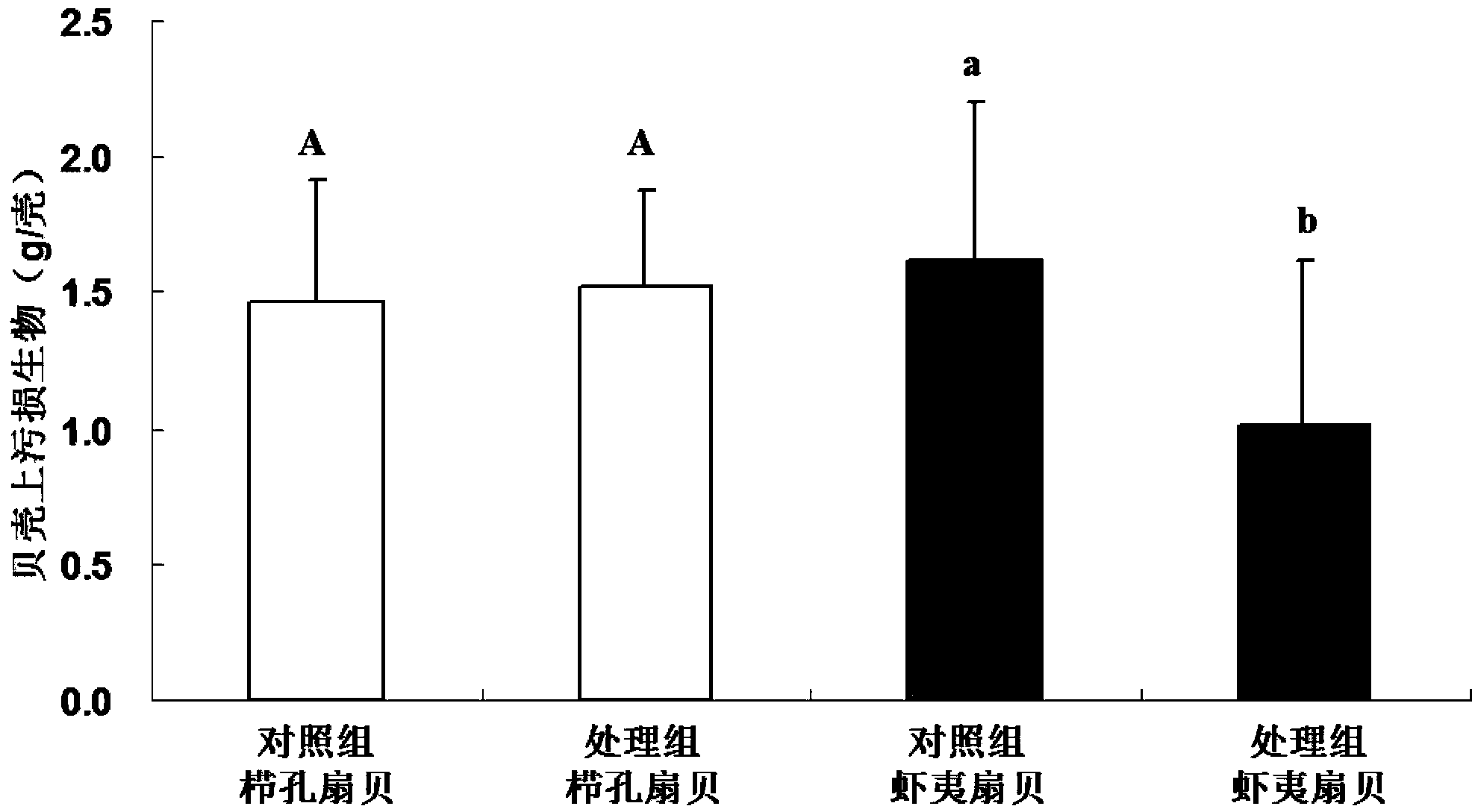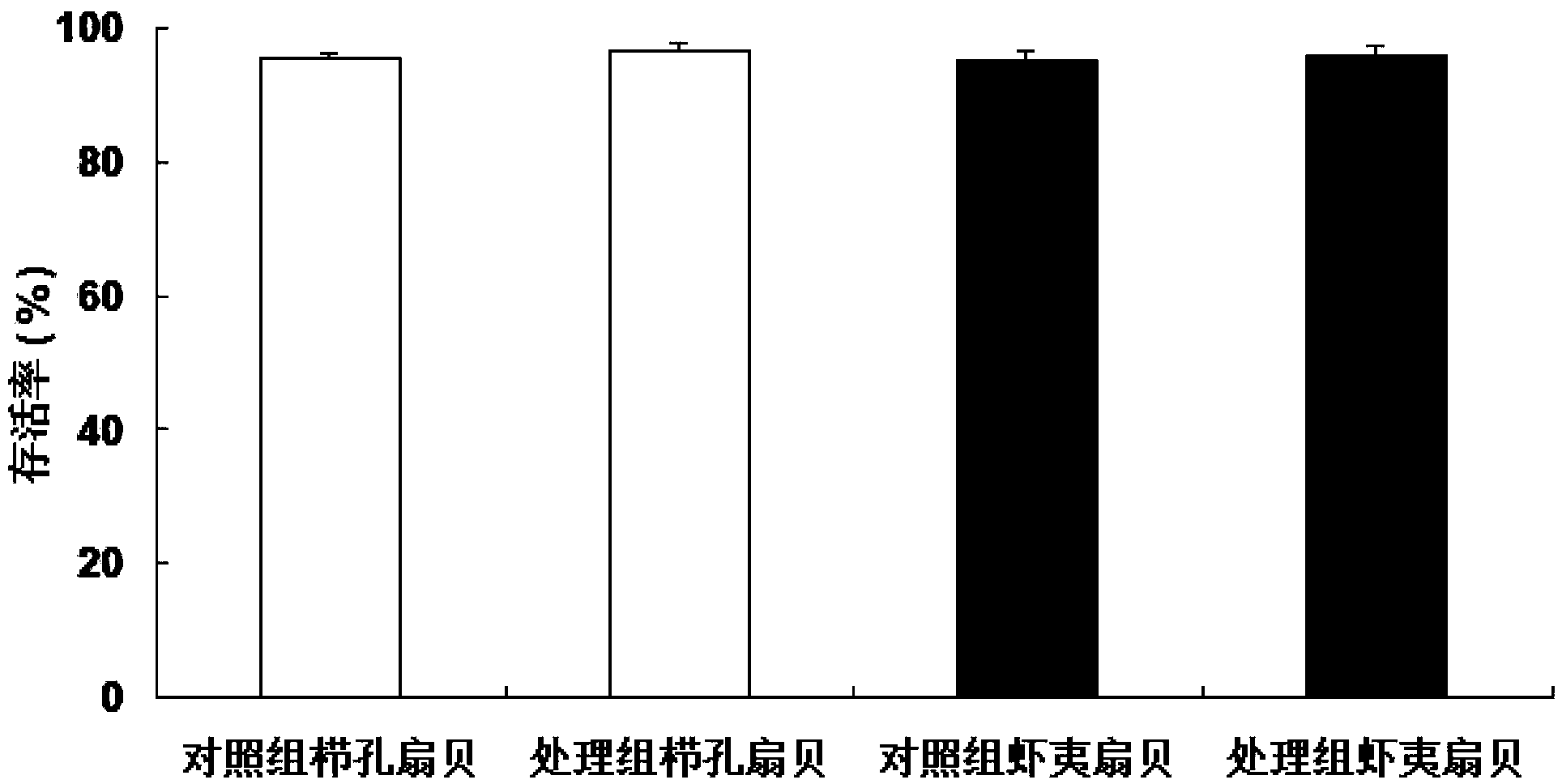Biological scavenging method for removing fouling organisms on mariculture scallop cages and shells
A technology for marine aquaculture and fouling organisms, applied in fish farming, application, climate change adaptation, etc., can solve the problem of reducing the dissolved oxygen and bait concentration of breeding cages, reducing the growth rate and plumpness of scallops, and the tearing and damage of breeding cages. and other problems to achieve the effect of reducing attachment and quantity, improving breeding efficiency and efficiency, and reducing competition
- Summary
- Abstract
- Description
- Claims
- Application Information
AI Technical Summary
Problems solved by technology
Method used
Image
Examples
Embodiment Construction
[0022] The present invention will be described in further detail below in conjunction with examples and accompanying drawings, but the embodiment of the present invention is not limited thereto, according to the above-mentioned content of the present invention, in conjunction with general technical knowledge and conventional technical means in this field, without departing from the above-mentioned fundamentals of the present invention Under the premise of technical thinking, other various forms of modification, replacement or change can be derived.
[0023] The invention discloses a method for biological removal of fouling organisms on seawater cultured scallop cages and shells. Sea urchins are mixed in the scallop cages to construct a "scallop-sea urchin" comprehensive culture system. The "scallop-sea urchin" comprehensive breeding system is to raise sea urchins in scallop cages according to a certain proportion of cultured scallops. In the integrated breeding system, sea urc...
PUM
 Login to View More
Login to View More Abstract
Description
Claims
Application Information
 Login to View More
Login to View More - R&D
- Intellectual Property
- Life Sciences
- Materials
- Tech Scout
- Unparalleled Data Quality
- Higher Quality Content
- 60% Fewer Hallucinations
Browse by: Latest US Patents, China's latest patents, Technical Efficacy Thesaurus, Application Domain, Technology Topic, Popular Technical Reports.
© 2025 PatSnap. All rights reserved.Legal|Privacy policy|Modern Slavery Act Transparency Statement|Sitemap|About US| Contact US: help@patsnap.com



